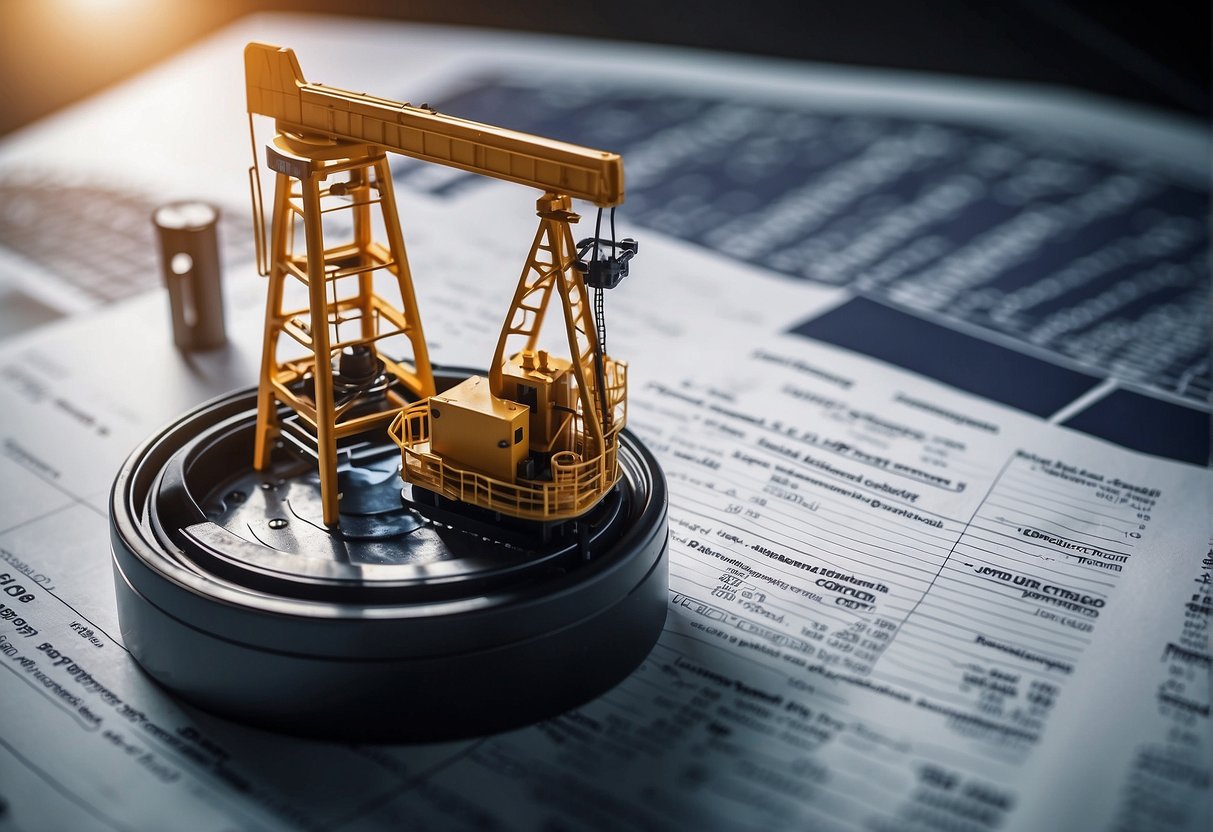Conducting annual appraisals of oil drilling rigs is a process that serves both regulatory purposes and strategic interests. The safety and operational efficiency of oil and gas extraction operations hinge on these comprehensive evaluations. Regulators mandate routine inspections to ensure that industry standards for safety and environmental management are upheld. However, these appraisals carry significance beyond mere compliance. They also provide valuable insights for companies to maintain their equipment optimally, tailor their operations in response to market conditions, and plan for technological upgrades.
Within the complex landscape of the oil and gas industry, the meticulous assessment of drilling rigs is crucial for maintaining the delicate balance between profitability and safety. Economic and market considerations, supported by accurate appraisals, enable operators to make informed decisions to sustainably manage and deploy their resources. Moreover, environmental impact evaluations are integrated into the appraisal process, reflecting the industry’s growing prioritization of responsible resource management. Given the high stakes associated with the extraction and processing of oil and gas, the annual appraisals have evolved into a critical tool for companies seeking to stay ahead in a highly competitive and technologically advancing sector.
Key Takeaways
- Annual appraisals are essential for oil drilling rig safety and efficiency.
- Strategic insights from appraisals aid in economic and environmental decision-making.
- Compliance with regulations is integral to the operational integrity of drilling activities.
The Importance of Oil and Gas Appraisals
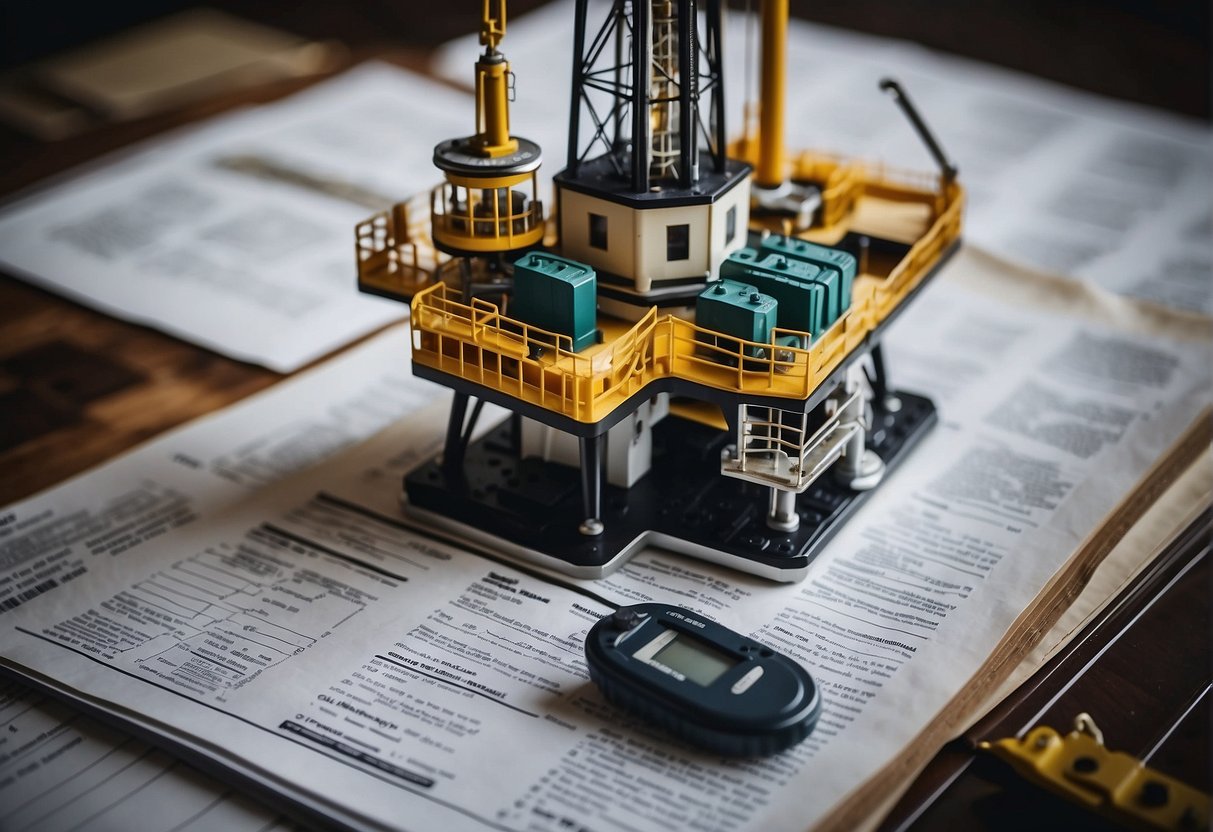
Oil and gas appraisals are critical in recognizing the true valuation of assets. They play a significant role in strategic planning and compliance, addressing both market trends and regulatory requirements.
Assessing Fair Market Value
Determining the fair market value of oil and gas assets is essential for transactions and financial reporting. A comprehensive appraisal helps stakeholders understand what their assets are truly worth in the current market. This knowledge informs a range of strategic decisions from mergers and acquisitions to securing loans. Accurate valuations promote transparency and fairness in transactions.
Depreciation and Obsolescence
As oil and gas equipment ages, it undergoes depreciation, losing value over time due to wear and tear. Additionally, obsolescence poses a risk as newer technologies may render older equipment less efficient or completely outdated. Appraisals take into account both physical depreciation and functional or economic obsolescence, ensuring that the recorded value of an asset is not overstated. It’s crucial for companies to have an up-to-date understanding of their assets’ condition and value to make informed decisions regarding maintenance, upgrades, or replacements.
Overview of Drilling Rigs
https://www.youtube.com/watch?v=JjGXsLWcwI0&embed=true
Drilling rigs are complex structures designed for creating boreholes to extract oil or gas. Their construction and operation are pivotal in the energy sector, necessitating detailed annual appraisals for safety and efficiency.
Types and Components
Drilling rigs come in various configurations, each comprising essential components such as the derrick, drill string, crown block, and the rotary table. Land rigs and mobile offshore drilling units (MODUs), including submersibles, jack-ups, and drillships, accommodate different exploratory environments and drilling depths. The derrick, a tall tower or framework, supports the drill string, a column of drill pipes that bore into the earth. At the base, the rotary table or top drive system enables the drill bit to penetrate rock layers.
Offshore vs. Onshore Drilling
The distinction between offshore and onshore drilling lies in location and the intricacies of their respective environments. Offshore rigs, stationed in bodies of water, require robust design considerations for stability against harsh marine conditions. Subsea systems, blowout preventers (BOPs), and advanced drilling technologies are standard on these platforms to manage the complexities of ocean drilling. Conversely, onshore rigs are often more accessible and easier to construct but must be efficient and adaptable to various terrestrial conditions, from desert landscapes to arctic zones.
Regulatory Compliance and Safety Standards
https://www.youtube.com/watch?v=tXyYlH71bd4&embed=true
Regulatory compliance and safety standards are critical in the oil drilling industry to ensure the protection of workers, the environment, and equipment.
Safety Regulations
Safety regulations in the oil industry are designed to prevent accidents, injuries, and environmental hazards. They require that oil drilling rigs adhere to strict operational standards and practices. For installations on land and at sea, comprehensive appraisals are conducted to ensure all equipment and procedures meet or exceed the required safety protocols. The Bureau of Safety and Environmental Enforcement (BSEE) plays a key role in developing and enforcing these safety standards, which are continuously updated to reflect technological advancements and newly identified risks.
Offshore Inspection Programs
Offshore inspection programs are a central part of maintaining compliance with safety rules on the Outer Continental Shelf. These programs include the annual inspection of all drilling rigs and production facilities. The Inspection Policy Branch of BSEE provides national-level oversight, aiming to enforce procedures that keep the offshore workforce safe. Alongside these inspections, oil companies must employ internal checks to ensure ongoing compliance between regulatory visits.
Economic and Market Considerations
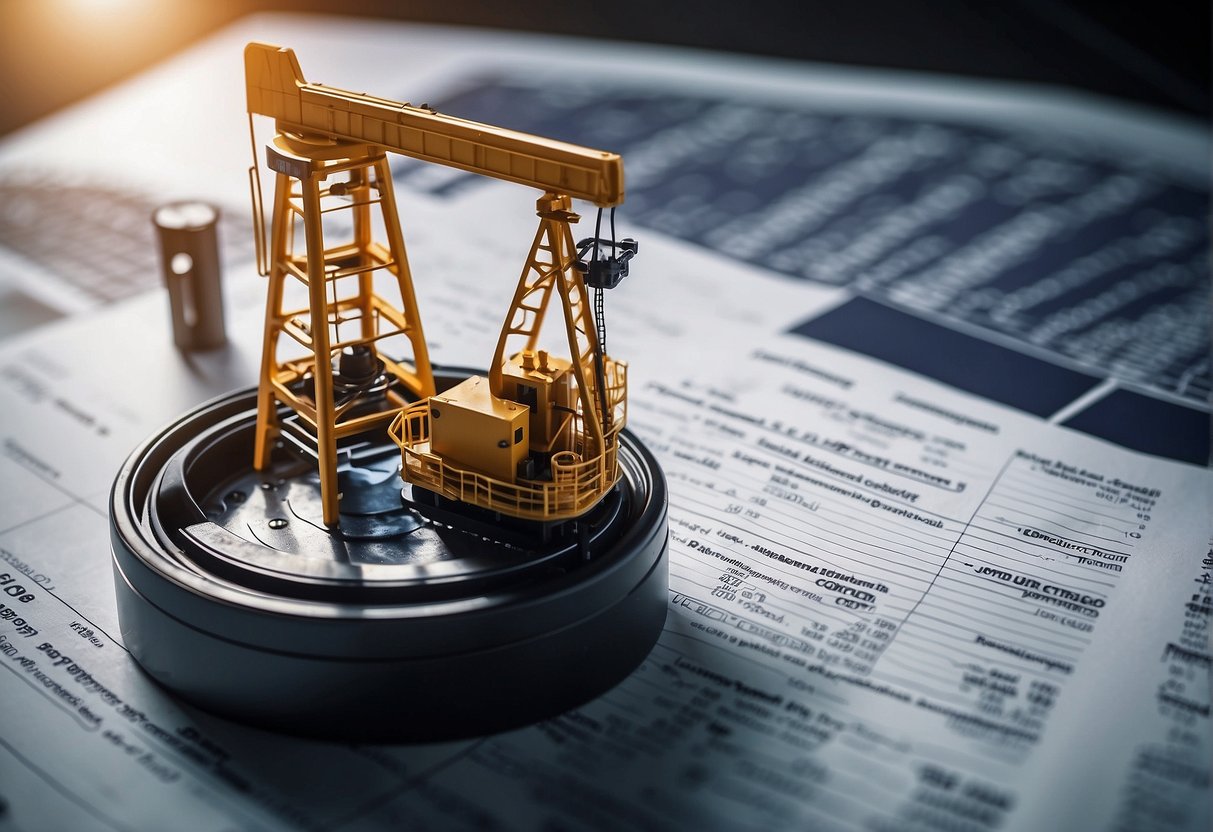
Economic factors significantly influence the operational and strategic aspects of oil drilling rigs, while market dynamics play a critical role in determining their valuation and the necessity of appraisals.
Current Markets
The current markets for oil drilling rigs have changed substantially in response to technological advancements and economic shifts. A recent report indicates that despite the decreased number of rigs, there is steady demand for oil, underpinning the need for precise appraisals. Suppliers adapt by introducing efficient drilling methods, yet they must navigate the volatility and cyclical nature of oil prices which directly impacts their revenue streams.
Supply and Demand Dynamics
Supply and demand dynamics are instrumental in shaping the energy sector. The law of supply and demand dictates that the availability of oil drilling rigs and their operational efficiency impact the market equilibrium. In the context of an energy transition towards more sustainable sources, traditional oil demands are juxtaposed with the need for strategic appraisal of oilfield assets to ensure they remain economically viable. This underscores the necessity appraisals of oilfield assets for suppliers to maintain profitability in a market that is sensitive to the fluctuating needs for hydrocarbons.
Oil Drilling Rig Maintenance

Oil Drilling Rig Maintenance is a critical aspect of the operational lifecycle of drilling equipment, ensuring safety, efficiency, and longevity. Proper maintenance mitigates the risks of equipment failure and downtime, and involves diligent routine inspections as well as timely repair and upgrades.
Routine Inspections
Routine inspections are a cornerstone of drilling rig maintenance. They typically include a comprehensive check of the machinery’s condition, from the rig’s derrick to the blowout preventers. These inspections should align with the manufacturer’s recommendations as well as industry standards. Critical areas to inspect include:
- Drilling Equipment: Checking for signs of wear and tear
- Safety Systems: Testing alarms and shutdown mechanisms
- Drill Floor: Ensuring all equipment is properly secured and operational
Repair and Upgrades
When issues are identified during inspections, prompt repair is necessary to prevent the escalation of damage. Repairs can range from simple part replacements to complex machinery overhauls. Moreover, upgrades are periodically undertaken to enhance rig performance, which may involve:
- Technology Integration: Incorporating digital systems for better monitoring
- Efficiency Improvements: Installing newer, more efficient components
- Compliance Upgrades: Updating systems to meet latest safety and environmental regulations
Regular maintenance of oil drilling rigs is not only a strategic advantage but often a regulatory requirement, as it directly influences the profitability and safety of the drilling operations.
Environmental Impact and Management
https://www.youtube.com/watch?v=RWtT0EfhNsE&embed=true
The environmental implications of oil drilling operations are profound, often directly influencing ecosystem integrity through events such as oil spills and fires. Effective management strategies are imperative to mitigate these effects and implement sustainable practices within the industry.
Oil Spills and Fires
Oil spills can result in substantial environmental damage, affecting water quality, marine life, and coastal ecosystems. For instance, the Bureau of Safety and Environmental Enforcement (BSEE) requires annual inspections of oil & gas drilling rigs to minimize the risk of spills and fires. These regulatory checks are intended to prevent incidents that could lead to significant environmental harm. In the case of oil rig fires, they not only pose a safety risk for workers but also emit large volumes of pollutants into the atmosphere, contributing to air quality degradation and climate change.
Sustainable Practices
To address the potential adverse impacts on the environment, the oil and gas industry has been directed to adopt more sustainable operational practices. These include:
- Waste Management: Proper treatment and disposal of drill cuttings and other wastes to reduce hydrocarbon contamination and preserve the marine ecosystem.
- Emission Controls: Implementing technology to control emissions and minimize the release of air pollutants.
These strategies are not only regulatory requirements but also align with an evolving industrial perspective that prioritizes environmental stewardship alongside resource extraction. Comprehensive environmental assessments and effective mitigation measures are central to this approach, aiming to safeguard ecosystems while maintaining the viability of the oil and gas sectors.
Technological Advancements in Drilling

The landscape of oil drilling has changed drastically with the introduction of cutting-edge technologies that optimize both safety and efficiency. Below, you will read about the recent innovative equipment designs and the role of automation in enhancing drilling processes.
Innovative Equipment Design
Recent years have seen a marked evolution in the design of oil drilling equipment, driven by advancements that cater to the industry’s stringent demands for robustness and precision. For example, the development of top drive systems has revolutionized how drill strings are handled, offering enhanced control and reducing manual labor requirements during drilling operations. These systems have improved the safety and speed of drilling activities, as substantiated by the insights shared on the improvement of time-efficient operational performance by industry experts.
Additionally, the introduction of managed pressure drilling (MPD) technologies has provided operators with the ability to precisely control the annular pressure profile in the wellbore. This technology facilitates drilling in difficult conditions, maximizing hydrocarbon recovery while minimizing risks associated with non-productive time and drilling-related problems.
Automation in Drilling
Automation has been a game-changer for the oil drilling industry, instrumental in achieving unprecedented levels of consistency and accuracy. One notable advancement is the integration of automated drill floor equipment, which substantially reduces the need for human intervention and minimizes the risks of on-site accidents. Drilling automation also includes real-time monitoring systems that enable remote diagnostics and anticipative maintenance, highlighting crucial data points for decision-making.
Moreover, the use of Cutting-edge robotics in automation has provided a pathway to safer, more efficient operations. They are designed to handle repetitive and hazardous tasks, thus reducing human exposure to potentially dangerous environments. Through such innovations, companies are able to operate in previously inaccessible or uneconomic regions, pushing the boundaries of what is achievable in the drilling sector.
Assessment of Oil and Gas Resources
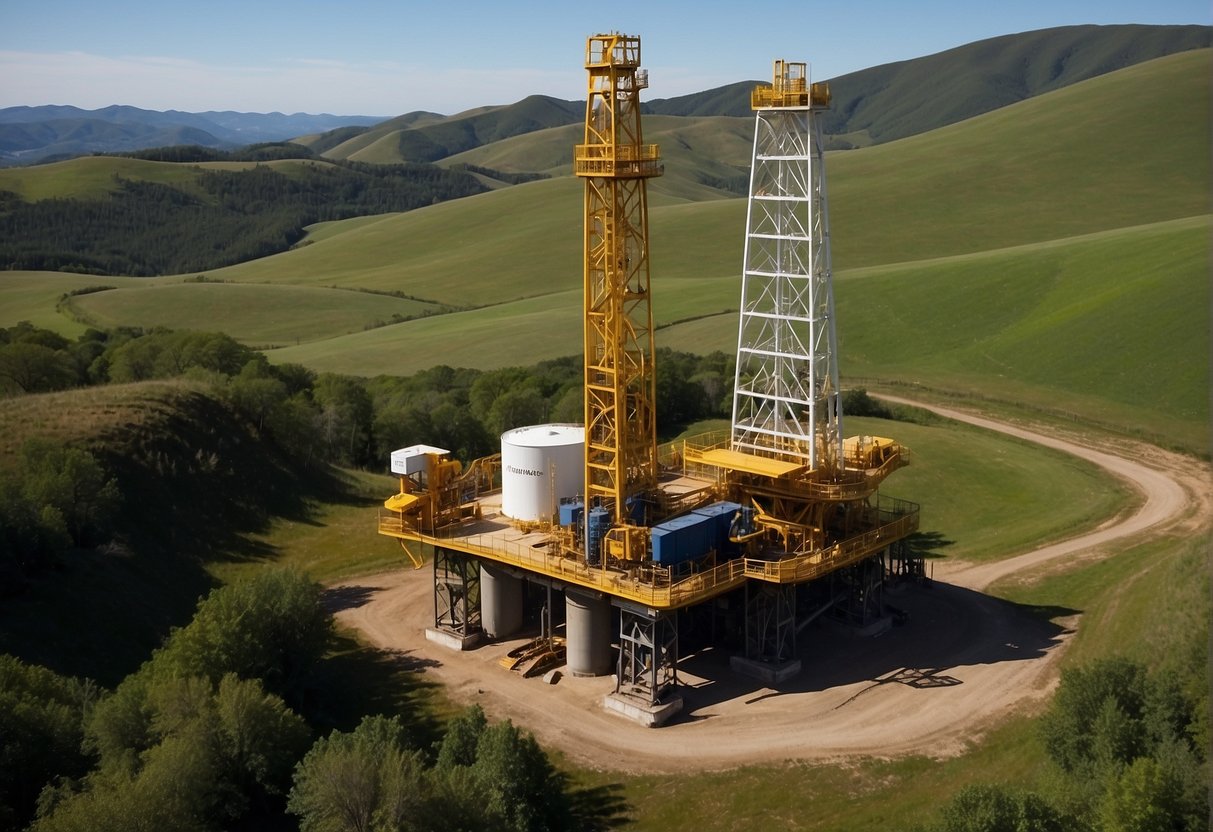
In the realm of the energy sector, accurate assessment of oil and gas resources is fundamental to both regulatory compliance and strategic planning. These assessments guide investment, development, and management decisions that are critical for both the economy and energy security.
Resource Evaluation
Resource evaluation is a meticulous process that entails the appraisal of undiscovered or known petroleum deposits to gauge their size and extractability. It often integrates geological survey data which could include the analysis of geological formations and basins with potential for hydrocarbon deposits.
One key aspect of resource evaluation is the estimation of resources in existing fields and those yet to be discovered. Companies like Baker Hughes provide updated rig count data, which is a vital indicator of both current and future exploration and production activities. Another facet of this process is the rigor of evaluation emphasizing operational efficiency and adherence to safety standards, which is crucial for sustainable exploitation of oil and gas reserves.
These evaluations also include periodic reviews, like the annual appraisals of oil drilling rigs, which not only ensure continued regulatory compliance but also contribute to strategic planning operations for oil companies. Assessments must consider economic viability, environmental impact, and technological feasibility to optimize the development and production of oil and gas resources.
The U.S. Geological Survey contributes to the broader understanding of these resources through comprehensive assessments, such as the evaluation of formations in various provinces highlighted in their National Oil and Gas Assessment.
Finally, the dynamic nature of the energy market requires these evaluations to be periodically updated to reflect new data on reserves and technological advances that may alter extraction processes, and ultimately, the potential of the resource base.
Professional Appraisal Services

Professional appraisal services play a crucial role in determining the value and condition of oil drilling rigs. They ensure adherence to safety standards and assess operational efficiency.
Selection of Assessors
The selection of assessors is critical for a comprehensive appraisal. Professional assessors must possess extensive knowledge of the oil drilling industry and be adept in evaluating the complex machinery involved. They should hold certifications that affirm their expertise and experience in this specialized field. It’s essential for accuracy that these professionals maintain impartiality throughout the appraisal process.
Independent Valuation Importance
An independent valuation is paramount to maintain objectivity and ensure stakeholders trust the appraisal process. Professional appraisal services must operate autonomously to deliver an accurate appraisal that reflects the true value and condition of the drilling rig assets. Independent professional assessors provide credibility to the appraisal, which is often required for regulatory compliance, financial reporting, and during transactions like sales or mergers.
Financial Aspects of Oil and Gas Assets
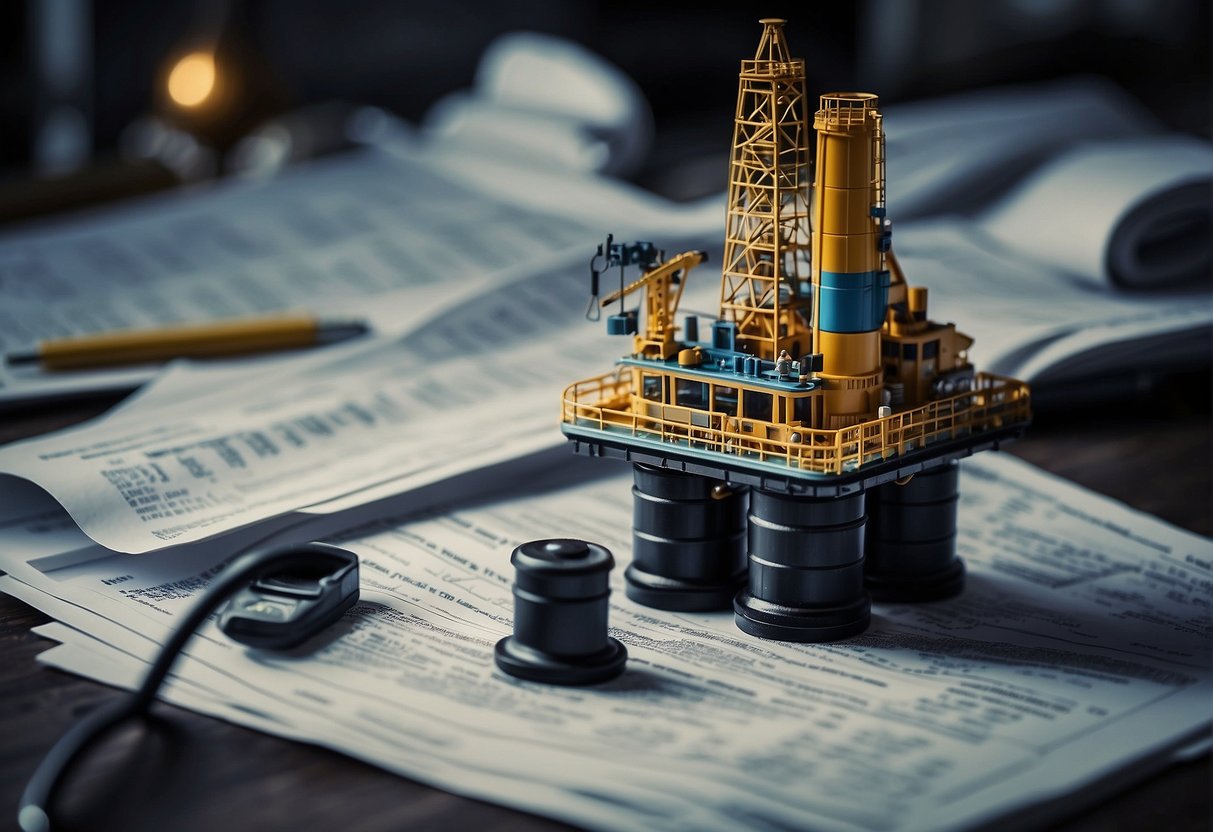
The financial intricacies of oil and gas assets encompass a broad spectrum from insurance coverage to asset liquidity. Entities operating within this sector need to meticulously navigate risk management and engage in strategic sales and acquisitions to maintain a robust financial foundation.
Insurance and Risk Management
In the oil and gas industry, insurance coverage is tailored to protect against the inherent operational risks and potential financial losses. Types of insurance for these assets typically include property damage, control of well, business interruption, and liability. Effective risk management strategies mitigate financial exposure by combining thorough risk assessment with comprehensive insurance policies, ensuring that companies are prepared for any unforeseen events or accidents.
Asset Sales and Acquisitions
Financial analysis plays a critical role in sales and acquisitions. Companies must evaluate the worth of oilfield equipment and infrastructure, which often involves substantial investments. A strategic acquisition can expand a company’s operational capabilities and asset portfolio, while the sale of assets might be leveraged to optimize the company’s financial strategy or raise capital. Acquisitions are particularly common for risk-averse entities seeking to strengthen their market position by tapping into existing production streams.
Frequently Asked Questions

The following section addresses some common inquiries about the regulatory and strategic aspects of annual appraisals and oil drilling operations. It details the oversight bodies, their role in strategic planning, and the implications for the energy sector.
What are the primary regulatory bodies overseeing oil drilling operations in the U.S.?
In the United States, the Bureau of Safety and Environmental Enforcement (BSEE) is a significant authority responsible for annual inspections of offshore drilling rigs and production facilities. Another key organization is the Federal Energy Regulatory Commission (FERC), which oversees various aspects of oil and gas industries, including pipeline transportation.
How do annual appraisals impact strategic decision-making in oil drilling companies?
Annual appraisals are crucial as they provide oil drilling companies with assessments of their operational efficacy and regulatory compliance. This information is integral to strategic planning and decision-making, ensuring that the companies are competitive and adhere to safety and environmental standards.
What role does the federal government play in regulating the energy sector, particularly fossil fuels?
The federal government regulates the energy sector through entities like the BSEE and FERC, enforcing laws and rules that aim to protect the environment and public health, and to ensure fair practices and rates in energy markets. These regulations affect a wide range of activities, from drilling to pipeline transportation.
Which regulations are specifically designed to govern natural gas companies?
The Federal Energy Regulatory Commission is responsible for regulating interstate natural gas pipeline transportation and sale for resale. They establish and enforce FERC’s oil pipeline regulations that include policies regarding pipeline rates and services as well as reporting requirements.
In what ways do energy regulations influence the operational strategies of oil drilling rigs?
Regulations mandate measures to protect workers’ health and safety, minimize environmental impact, and prevent resource waste, which in turn requires drilling companies to integrate these considerations into their operational protocols, affecting day-to-day activities and long-term strategic plans.
How does the regulatory environment affect the long-term planning of oil drilling projects?
A stringent regulatory environment necessitates that oil drilling companies anticipate and adapt to compliance-related costs and constraints. It pushes companies to innovate in technology and processes, invest in safety measures, and ensure environmentally responsible operations as they develop their long-term project roadmaps.

